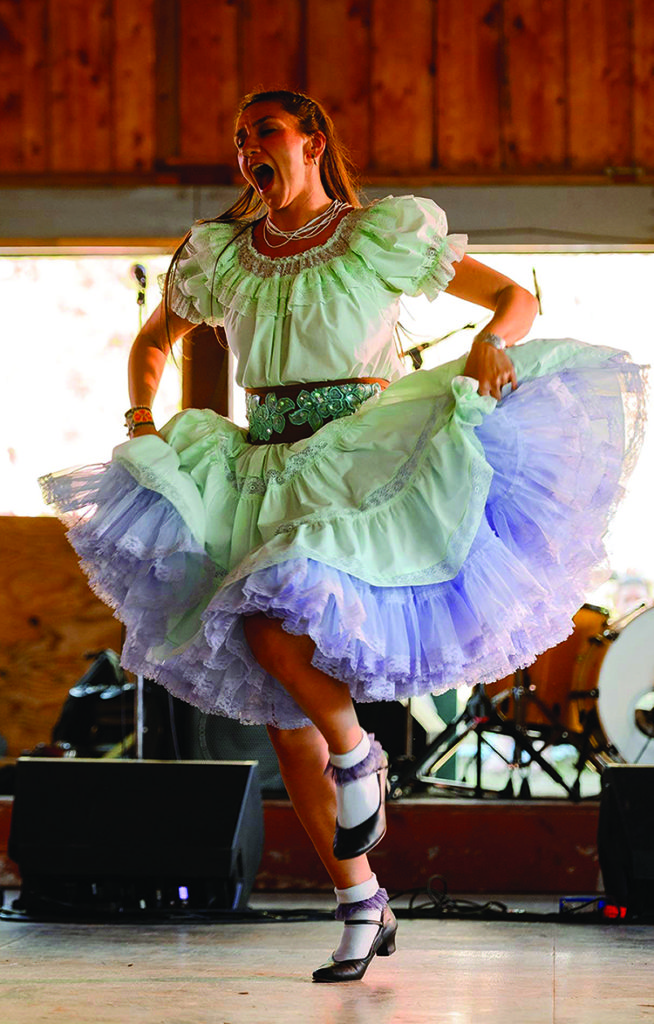Creative Decolonization: Jeanette Kotowich explores her indigenous identity - Vancouver Ballet Society
- Home
- Features 2015 - 2019
- Creative Decolonization: Jeanette Kotowich explores her indigenous identity

by Tessa Perkins Deneault
As a dance artist of Cree, Métis and mixed European descent from Treaty 4 Territory in Saskatchewan, Jeanette Kotowich’s cultural heritage is a source of inspiration for her work. She explores identity through dance, telling stories of culture, land and Indigenous traditions. To her, dance is a language that can express a unique worldview in a contemporary context, as well as a spiritual practice and an intergenerational tool to pass on tradition and culture.
Along with creating her own solo works that explore her personal Indigenous heritage and connection to her ancestors and the landscape of Saskatchewan, Kotowich is a member of a number of Vancouver-based dance companies whose work is rooted in Indigenous traditions. One of those is Yvonne Chartrand’s company V’ni Dansi, which presents traditional and contemporary Métis jigs and Chartrand’s contemporary works inspired by her Métis heritage.
Raven Spirit Dance is another; Kotowich has performed in all of artistic director Michelle Olson’s contemporary choreographic works, which are inspired by an Indigenous worldview, since 2010.
In 2014, Kotowich joined the Dancers of Damelahamid. Hailing from the Gitxsan First Nation of the northwest coast of British Columbia, this intergenerational dance company, now based in Vancouver, was founded by artistic director Margaret Grenier’s parents in the 1960s. As Kotowich explains, “The commitment extends beyond being a contracted dance artist — I’ve been adopted as part of the family.” While the company began in the Gitxsan tradition, other Indigenous influences have been incorporated through marriage, including Cree traditions.
Moving through different Indigenous dance traditions may seem complex, but Kotowich explains that Indigenous identities are always multi-faceted. Just as her own identity includes Cree, Métis, German, Polish and Scottish heritage, many Indigenous identities are a blend of various traditions and cultures. Through her own work as a choreographer, Kotowich is exploring the many facets of her background to discover how they have shaped her worldview and connection to culture, land and tradition.
In her latest solo, Valley, Kotowich wants to explore how the landscape of her home in Saskatchewan lives in her body. She has a sense that her body is archiving all the dance languages of her mixed heritage, and she is digging deep to access them.
The process of exploring identity this way began at the Indigenous program at Alberta’s Banff Centre, where she met Chartrand and many other members of the Indigenous dance community who continue to inspire her, including Starr Muranko, Gaetan Gingras and Santee Smith. “I didn’t know about the Indigenous contemporary dance world,” says Kotowich, “but all of a sudden I had all these people to look up to; some are mentors to this day.” In 2010, she participated in an intensive training program with Smith, the artistic director of Kaha:wi Dance Theatre in Toronto.

Kotowich’s training began with childhood ballet and modern dance classes in Regina, where she grew up, and she has a bachelor of fine arts in dance from Simon Fraser University. Later, wanting to go beyond mainstream European and American forms, she says, “I had to decolonize my dance practice to make room for other cultural dance practices.”
After building up a network of collaborators in Vancouver, she began to feel something was missing. “I started to feel the pull toward investigating my own artistic voice and dedicating time for my own practice.” In 2015, she created her first solo, Steppin’, a jig that combines Métis traditions with contemporary influences. In 2016, she began work on Valley, described as “a creative returning to land, body and identity.” Developed over a number of residencies, the full-length work will premiere in 2020.
At the 2019 Vancouver International Dance Festival, she performed Eloise, a character-driven solo exploring the practice of land acknowledgment, and appeared in Raven Spirit Dance’s Gathering Light. She helped co-ordinate Dancers of Damelahamid’s annual Coastal Dance Festival, and in September, she will perform with Damelahamid at the National Arts Centre in Ottawa for the premiere of Mînowin, described on the centre’s website as a “multimedia dance work” that connects “to landscapes from contemporary perspectives of customary Indigenous dance forms.”
For Kotowich, the journey of learning about her identity through dance embodies the idea of being a steward of traditional knowledge and contemporary Indigenous perspectives. The journey continues with her collaborative work as well as her solo choreography, which bridges Indigenous and non-Indigenous communities. Kotowich tells stories from a unique perspective informed by her heritage and cultural influences.

Photo: Daniel Paquet
